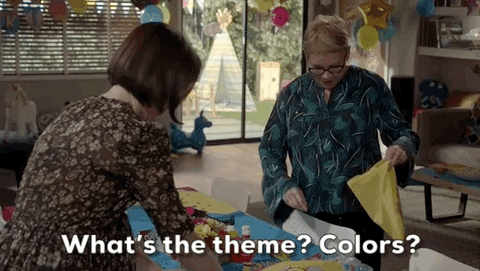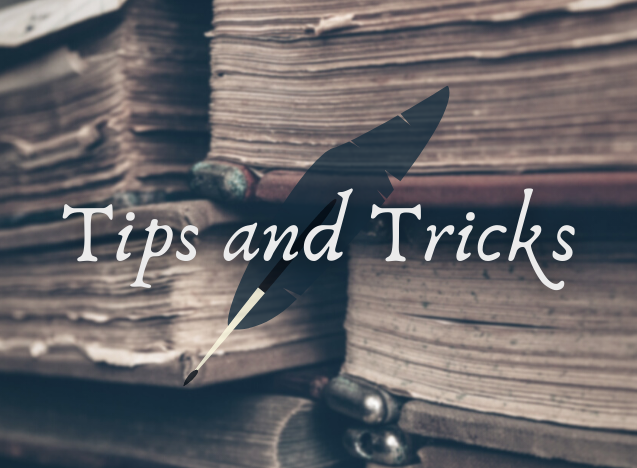This week, we’re talking theme.

A theme is a central idea or message that runs throughout your novel. Incorporating a theme can allow you to explore important issues, discuss ideas, and create a more meaningful and engaging story for your readers.
But how?
‘Theme’ is such a broad-brush concept that it can feel like a daunting task to 1) create one that works for your story and 2) weave it in while juggling character, plot, worldbuilding, etc.—so let’s start with the basics.
Themes: some examples
As a central, underpinning element to your story, the theme is a broad brush message or idea that your story is broadly about. Though stories often touch upon multiple themes, you can strengthen the core of your manuscript by using a strong, central, ‘controlling’ theme that underpins the others.
Here are some examples of themes in fiction:
Good vs. Evil
Progress vs. Stagnation
War vs. Peace
Coming of age
Self-discovery
Some themes are more complex, or have an inherent ‘point’ or meaning:
Love is love
Blood is thicker than water (family comes first)
Absolute power corrupts absolutely
Progress is a double-edged sword
Good always triumphs
Everything returns to balance
One way to find your theme is to ask yourself: what is my story really about? What message do I want my reader to take away from it once they’re finished?
Or, if that doesn’t work:
What struggles do all of my characters share? What similarities can I find in the challenges they face?
By identifying and leaning into that common thread, the different elements of your story will pull together in a more cohesive whole.
But before we get into the ‘how,’ let’s look at one of the common pitfalls of thematic inclusion, especially when drawing from the second list of themes: moralizing.
Choose with intention, but beware moralizing
When incorporating a theme, the issues we feel most strongly about (or the questions we’ve been pondering for a long time) often bear the ripest fruit. This is one of the many ways you can “write what you know”—even if your story-world is filled with monsters and faeries and dragons.
However, when we when we choose themes that are important to us, we’re not only choosing something we feel strongly about, but a topic on which we have a strong opinion.
There’s nothing wrong with using fiction to explore and challenge our ideas and beliefs. (In fact… that’s arguably what fiction is for.)
But, if we aren’t careful, we run the risk of turning our stories into a platform from which we preach to our readers.
Moralizing happens when an author uses their characters to espouse a particular point of view or moral lesson. It’s most obvious when that point of view or moral lesson aligns closely with a recognizable side of an (often) controversial modern debate.
Readers don’t like being told what to think, even when we’re telling them something they already agree with. If you’re planning to use theme to tackle something heavy—equality, bodily autonomy, etc.—it’s worth ensuring not only that you aren’t feeding the message directly to the reader by using characters as mouthpieces, but that your characters are complex enough that, though the reader might pick up on the theme, it never comes off as preachy or heavy-handed.
In other words: focus on creating complex, nuanced characters with their own beliefs, motivations, and moral codes—not only ones that either align with or diametrically oppose yours. Instead of using them to directly discuss the theme (and the moral lesson hidden within), allow the characters and their actions to drive the story and thus reveal the underlying themes and messages naturally. And please, please don’t set up your story so all the ‘good guys’ agree with your thematic message while the ‘bad guys’ stand in opposition to it.
In other words: keep it subtextual.
Keep theme subtle with symbolism
One way to keep theme subtextual is through symbolism, ie: the representative use of objects or imagery. For example, if your theme is about the importance of family, you could use a recurring symbol like trees, or a specific representative object like a family heirloom. Trees might show up in different periods of fruit and flower throughout the story, representing the state or strength of the family. A cheating husband’s carelessness might be throwing away his marriage; perhaps he loses his faithful grandfather’s cufflinks after meeting with his mistress.
By using a series of related symbols (or the same symbol in different ways), you can create a sense of continuity and tie your theme to your story. If that’s a little too subtextual, you can also use character to explore theme—just be sure you’re doing so in a nuanced way.
Use your characters for nuanced representation
Another way to represent and explore theme is with character. What lessons can your characters learn, what relationships can they have, and what events can they face that all tie back to that same theme?
When planning characters and character arcs, however, it’s important to incorporate the theme in a nuanced way. In a story about the importance of family, avoid having the ‘good’ character struggling to hold their family together (and getting rewarded at the end), while the ‘bad’ character openly rejects their family bonds and pays for it. Thematic nuance might mean writing a ‘good guy’ who struggles with the loss of a loved one while the ‘bad guy’ tries to hold their family together, but does so in deeply flawed ways.
By using characters to explore the theme in greyscale, you can add depth and complexity to the story—and avoid sending unintended or reductive messages about ‘right’ and ‘wrong!’
Don’t forget the setting
But don’t stop at character; setting, too, be used to create a sense of atmosphere and mood that reflects or enhances the theme. Returning to the example of a story about the importance of family, think about how different the story would feel when set in 1) a small town where everyone knows everyone else vs. 2) a big city where people can often feel isolated and alone. What different elements of theme would each setting allow you to explore?
Remember: setting is a great driver of conflict. Setting impacts character, which impacts plot. Therefore, choosing a setting that resonates with your theme will help you bring thematic conflict to the forefront in an organic way that won’t feel as preachy or forced.
Weave theme into your subplots
Finally, don’t forget about the power of subplots. Though your protagonist might carry your story’s thematic heart, are there subplots or side characters you can use to explore other, related elements of that theme (or even, other related themes)?
In a story about the importance of family, you might contrast the protagonist’s struggle with loss with a secondary character’s voluntary estrangement with their family of birth—and their subsequent discovery of ‘found family,’ or family of choice. This is another great way to add complexity and nuance, particularly with complex or hot-topic themes.

In conclusion, incorporating a theme into your fiction novel is a great way to add depth to your writing. By choosing a theme that is meaningful to you and using symbolism, characters, setting, and subplots to explore the theme, you can create a more engaging and meaningful story for your readers. Take your time and think about the theme you want to explore in your story, plan how you want to incorporate it and then let your imagination run wild. Remember that the theme should be a subtle undertone and not overpower the story, and it should not be forced in the story, it should flow naturally.
What themes have you written into your stories? Did you find yourself leaning more towards one method of incorporation (ie: symbolism v. character v. subplot)?

 Tips for Writing Action Scenes
Tips for Writing Action Scenes Killing Darlings
Killing Darlings Worldbuilder’s Disease: Intro
Worldbuilder’s Disease: Intro
Leave a Reply